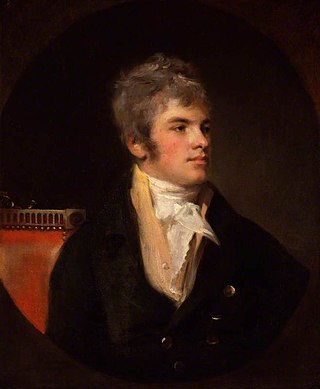Top Qs
Timeline
Chat
Perspective
Henry Petty-Fitzmaurice, 3rd Marquess of Lansdowne
British politician (1780–1863) From Wikipedia, the free encyclopedia
Remove ads
Henry Petty-Fitzmaurice, 3rd Marquess of Lansdowne (2 July 1780 – 31 January 1863), known as Lord Henry Petty from 1784 to 1809, was a British statesman. In a ministerial career spanning nearly half a century, he notably served as Home Secretary and Chancellor of the Exchequer and was three times Lord President of the Council.
Remove ads
Background and education
Lansdowne was the son of Prime Minister William Petty, 1st Marquess of Lansdowne (better known as the Earl of Shelburne), by his second marriage to Lady Louisa, daughter of John FitzPatrick, 1st Earl of Upper Ossory. He was educated at Westminster School, the University of Edinburgh, and Trinity College, Cambridge.[1][2]
Political career
Summarize
Perspective
He entered the House of Commons in 1802 as member for the family borough of Calne and quickly showed his mettle as a politician. In February 1806 he became Chancellor of the Exchequer in Lord Grenville's Ministry of All the Talents, being at this time member for the University of Cambridge, but he lost both his seat and his office in 1807.
In 1809 he became the 3rd Marquess of Lansdowne, succeeding his politically disaffected elder half-brother, John Petty, in the title. The 2nd Marquess, had been obliged to leave Ireland, where the family had estates, after intelligence reports had implicated him in the United-Irish conspiracy of Robert Emmet.[3] On the death of their father, the 1st Marquess had married his mistress by whom he had had no children.[4]
In the House of Lords and in society the third marquess continued to play an active part as one of the Whig leaders. His chief interest was perhaps in the question of Roman Catholic emancipation, a cause which he consistently championed, but he sympathised also with the advocates of the abolition of the slave trade and with the cause of popular education. Lansdowne, who had succeeded his cousin, Francis Thomas Fitzmaurice, as 4th Earl of Kerry in 1818, took office with George Canning in May 1827 and was Secretary of State for the Home Department from July of that year until January 1828.[1]
He was Lord President of the Council under Earl Grey and then under Lord Melbourne from November 1830 to August 1841, with the exception of the few months in 1835 when Sir Robert Peel was prime minister. He held the same office during the whole of Lord John Russell's ministry (1846–1852), and, having declined to become prime minister, sat in the cabinets of Lord Aberdeen and of Lord Palmerston, but without office. In 1857 he refused the offer of a dukedom.[1] Punch (October 1857 p.144) approved of his refusal, writing: “Lord Lansdowne won’t be Duke of Kerry. Lord Lansdowne is a wise man, very. Punch drinks his health in port and sherry”.[5]
In his later years Lansdowne was known as "the Nestor of the Whigs" (after the wise old king of Greek mythology).[6] His social influence and political moderation made him one of the most powerful Whig statesmen of the time; he was frequently consulted by Queen Victoria on matters of moment, and his long official experience made his counsel invaluable to his party.[1] He died on 31 January 1863.[1]
In Kenmare, he donated the site of the Holy Cross Church to the town. In 1864, Father John O'Sullivan (1806–1874) built the church on that site.
Remove ads
Other public appointments
Lansdowne chaired the inaugural meeting of the London Statistical Society, and was its first president (1834–1836). He later served a second term (1842–1844). (See The Times 15 and 17 March 1834, and John Bibby (1987) HOTS: History of Teaching Statistics.)
Family

Lord Lansdowne married Lady Louisa Fox-Strangways, daughter of the 2nd Earl of Ilchester, in 1808. They had two sons and one daughter:
- William Thomas Petty-FitzMaurice, Earl of Kerry (30 March 1811 – 21 August 1836)
- Lady Louisa (1813 – 12 June 1906) married Hon. James Kenneth Howard, son of Thomas Howard, 16th Earl of Suffolk. They had a son Kenneth (married Lady Emily Bury, daughter of the Earl of Charleville) and daughter Winifrede.
- Henry Petty-FitzMaurice, 4th Marquess of Lansdowne (7 January 1816 – 5 July 1866).
Louisa died in April 1851, aged 65, and Lord Lansdowne in January 1863, aged 82. His eldest son, the Earl of Kerry, had predeceased him and he was succeeded in the marquessate by his only surviving son, Henry. The latter was the father of Henry Petty-FitzMaurice, 5th Marquess of Lansdowne, who also became a distinguished statesman. The elderly 3rd Marquess had a close relationship with his grandson, the future 5th Marquess.[7]
Remove ads
References
Books
External links
Wikiwand - on
Seamless Wikipedia browsing. On steroids.
Remove ads

